Aorus Z690 Pro Motherboard Review
Author: Dennis GarciaBenchmarks - Overclocked
As with all of our reviews, we pit the default speed system against the overclocked one in a head-to-head byte match. The effective overclock for these tests is 5.2Ghz @ 52x multiplier.
In addition to the CPU overclock I set the XMP profile on the memory and bumped the memory frequency up to 5400Mhz. The XMP clock for these Crucial modules is 4800Mhz and is the same as JEDEC and I’m impressed that they overclocked so well.
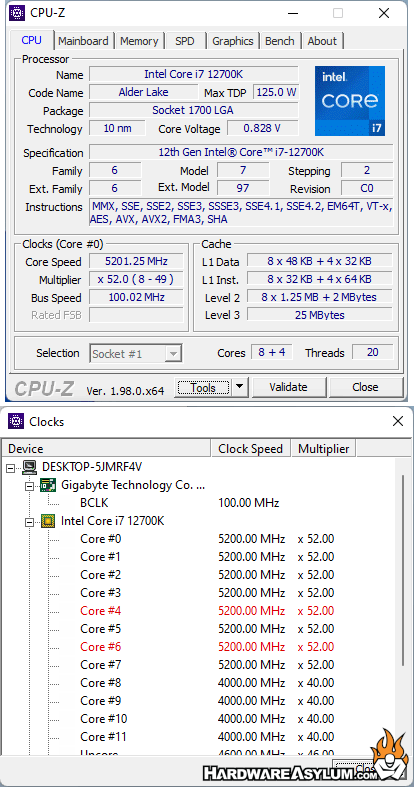
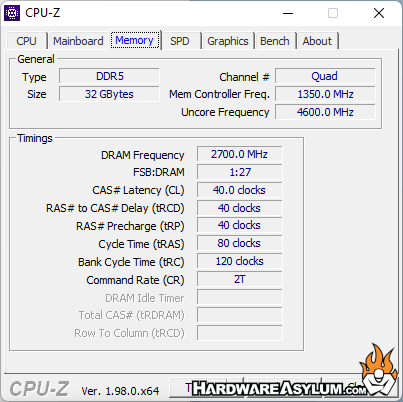
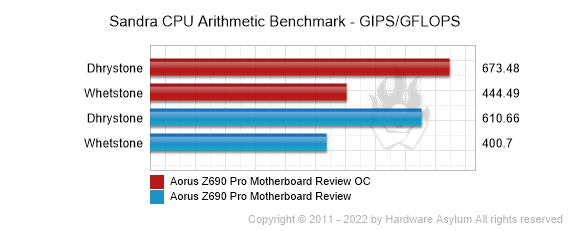
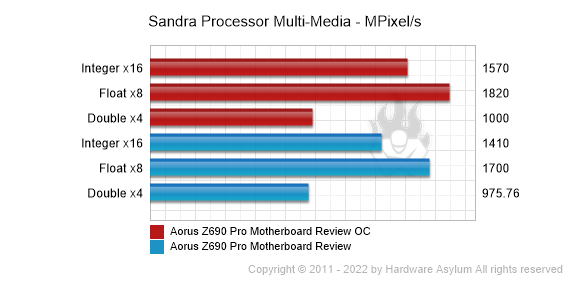
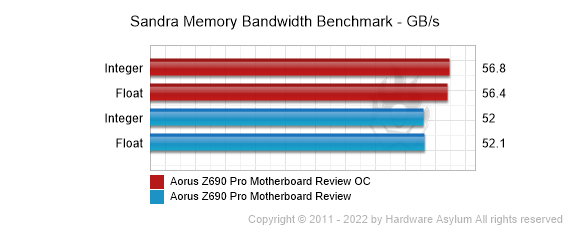




To maximize system performance, you have a couple options. The first is straight multiplier overclocking after that you can extract a little more by tuning the BCLK and memory settings. This will increase overall memory bandwidth and make things faster due to how the multipliers work. Of course, with memory you can “buy” performance by simply buying faster modules and in doing so you not only get faster out of box performance but considerably more headroom if you choose to experiment with BLCK overclocking and tuning the memory controller.
With modern CPUs heat is a major concern and when combined with “Factory Overclocking” using boost you need to ensure that your CPU is kept cool to get maximum performance. This goes for overclocking on Alder Lake. In a previous review I found that the board wouldn’t run stable at anything above 5.1Ghz and even then it would throttle back to 4.9Ghz.
However, with the Z690 Aorus Pro combined with the Cooler Master PL360 Flux I was able to dial in a 5.2Ghz overclock and have it run at that speed throughout the entire benchmark suite. Granted if I ran back to back Cinebench R20 some of the cores would drop down to 5.1Ghz which is to be expected.
As with all overclocking adventures every item in your build will contribute to the final score. For me, the trick was tuning voltage to find a happy spot where I was giving the CPU enough voltage to run but, keeping it low enough to keep the CPU from going into a thermal throttle. Proper cooling can make this process easier along with a nicely ventilated chassis.

